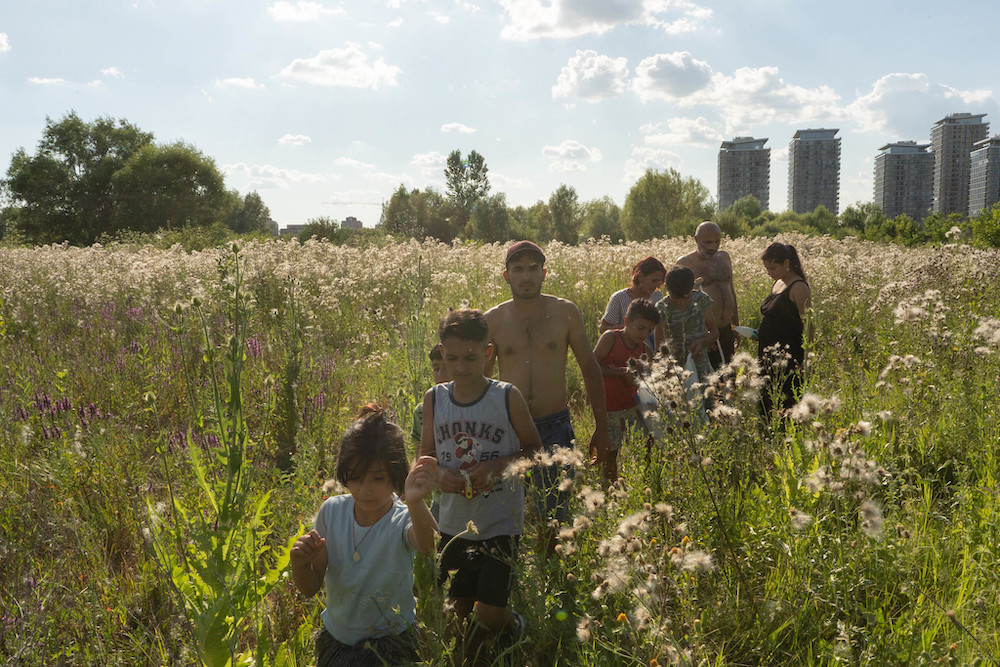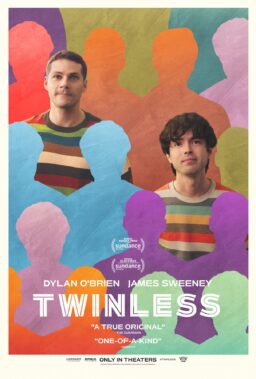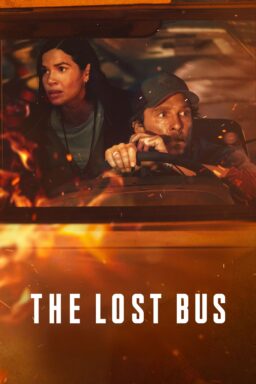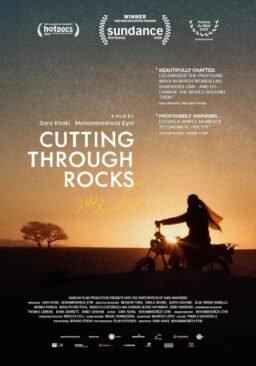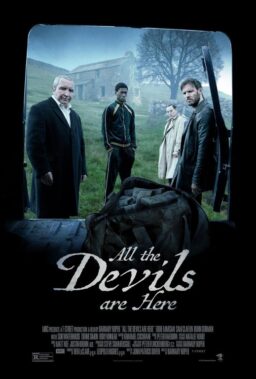A family’s journey of culture shock that sprawls over many years and different members’ lives, “Acasa, My Home” concerns what lack of freedom comes with being quote-unquote civilized. Director Radu Ciorniciuc has assembled a chronology of what happens to a family when they are removed from their secluded world on a Romanian marsh, after bureaucracy turns their land into a state park and forces them to relocate to the city. As some family members’ lives change drastically in the doc’s 86-minute run-time, the film wrestles with what is natural about keeping up with modern society.
“Acasa, My Home” starts with moments of harmony. A bunch of kids of different ages playing by a marsh, tackling each other among reeds and mud. Their home, not far from a lake and covered with trash and who knows what, does not look all that inhabitable—a shack among reeds shared with two parents and countless animals. Still, there is not a sense that anyone in the Enache family feels trapped to this existence; some of them have only known this place as their life. Whenever Ciorniciuc’s camera films one of the sons fishing on the water, a striking image emerges: in the foreground, a boy fishes in darkness, with only a flashlight to help him see on the water. In the background, lit-up smoke stacks standing next to each other, a part of a world that is far away, but we can feel encroaching on the family.
Like this year’s opening night film “The Painter and the Thief,” this is the kind of documentary that feels for the most part just along for the ride, and uses abrupt but discernible passages of time to make its greater points about how its subjects have changed. The people in this riveting film change a lot (and it would be a disservice to mention how), but it’s particularly distinct how the family goes from being a unit (of nine children) that sticks together to some members getting their own arcs. Earlier in the movie, the blustery father Gica threatens during one of his big “scenes” to light himself on fire in protest, in front of the park officials; later when he is reduced to more of a background character, Gica is laying on a couch, only as powerful as his ability to yell.
“Acasa, My Home” also depicts the advantage of education, given that Gica received some, but then raised illiterate nine illiterate kids. (“You children don’t need this shit,” Gica says in an early sequence on the marsh, when he throws a newly donated book into the shack’s sole oven.) We get to see the boys learn to read and write, and it is has a complex significance to what opportunities are then opened up to them. The film also notes, with a specific lack of focus on the women back at the Enache’s cramped new apartment, how females in the family are not given the same opportunities as the males due to roles that have been continued from the marsh. The “hero” of the film, it should be noted, is a social worker named Mihaela. She helps keep the family—and the bureaucrats—in check.
Ciorniciuc’s approach as an editor is to largely lead with information about how different brothers have their coming-of-age parallel with this culture shock, as if cataloguing different experiences (here’s what happens they face the police, or encounter screen culture, etc.). Occasionally, Ciorniciuc includes a succinct debate between the family members that lays a lot of the film’s ideas out on the table, like when one of the sons rebels against Gica for all that he did not provide his children while they lived in seclusion. The family does not all grow together, and the ramifications of their culture shock is often fascinating.
Yet while the film does provides an emotional journey of seeing people you come to care for change, the Enache’s constant instances of discovery do not help us see the world in any new way. And the ending simply arrives, symmetrical as it may be. I can readily imagine people seeing this documentary as either a cause for endless discussion concerning its numerous scenarios of nature vs. nurture, or an open-and-shut case, about watching people catching up with the conditions of modern society. But wherever it leaves you, “Acasa, My Home” ultimately prevails in conveying numerous external and internal changes for the Enaches, its numerous fly-on-the-wall passages able to speak for themselves.

Also competing in the World Cinema Documentary category, “Once Upon a Time in Venezuela” is about the significance of a small village named Congo Mirador, a once-bustling fishing hub comprised of houses that are on stilts on the water. The village is full of proud citizens, as indicated by all of the film’s footage of everyone hanging out on their shack islands, partying at night, or making their way to each other via boat. Anabel Rodríguez Ríos’ documentary is lovingly framed by the songs from an old man, who strums a guitar and sings whimsical songs while sometimes cluing the viewer into a more prosperous life for himself, and Venezuela. He adds a sense of longing to this microcosm of how government can forget about the smaller places, and leaves them to rot.
Ríos has a great deal of access to people in this remote part of Venezuela, and spends a lot of time capturing them during regular days or on special occasions. One of her focal characters is a teacher named Natalie, who has to put her own money into maintaining the limited schooling space and supplies that she has, and feels threatened by the community’s big fish, Tamara. She quickly takes over a new project to fight the sedimentation that is destroying parts of the homes in the area, but is also part of a bribing campaign for the nation’s elections, offering a great deal of money to people to vote for a Chavist candidate.
“Once Upon a Time in Venezuela” takes us on the boats with these residents; sometimes Ríos even interjects with a question, but it’s mostly about watching these lives unfold. In one of its more disturbing, revealing scenes, Ríos and cinematographer John Márquez watch a Congo Mirador beauty pageant of young girls, a disturbing moment used to show what is expected of the women in this community, especially as her story’s main “characters” are different women who represent different citizens of various power. With the worsening conditions of Congo Mirador, Ríos establishes a melancholy motif of people having to pack up and move, their homes floating away under two boats (the floor ripped out), headed toward an unknown destination.
In turn, Ríos’ film is visually immersive to the community and its passage of time, though it does make you wish you knew more about the people of Congo Mirador, especially the ones who reoccur in her editing that can tend to jump around. Like Natalie for example, they are not detailed by their own life story so much as providing examples of this corruption that threatens all institutions in any community. Ríos often wants us to connect with these people through what they represent, instead of letting us connect through their individual lives and then building out from there.
The person we do get to know the most is Tamara, a Hugo Chavez super fan who does most of her ruling from a swinging hammock, cell phone always in hand. She provides the challenging experience that you want from a documentary like this, where a polarizing figure experiences a roller coaster of self-awareness, and a filmmaker’s dedication to and respect for their subject captures every step of it. Tamara finds out, in one way or the other, that she’s not the only politician leading with self-interest.

